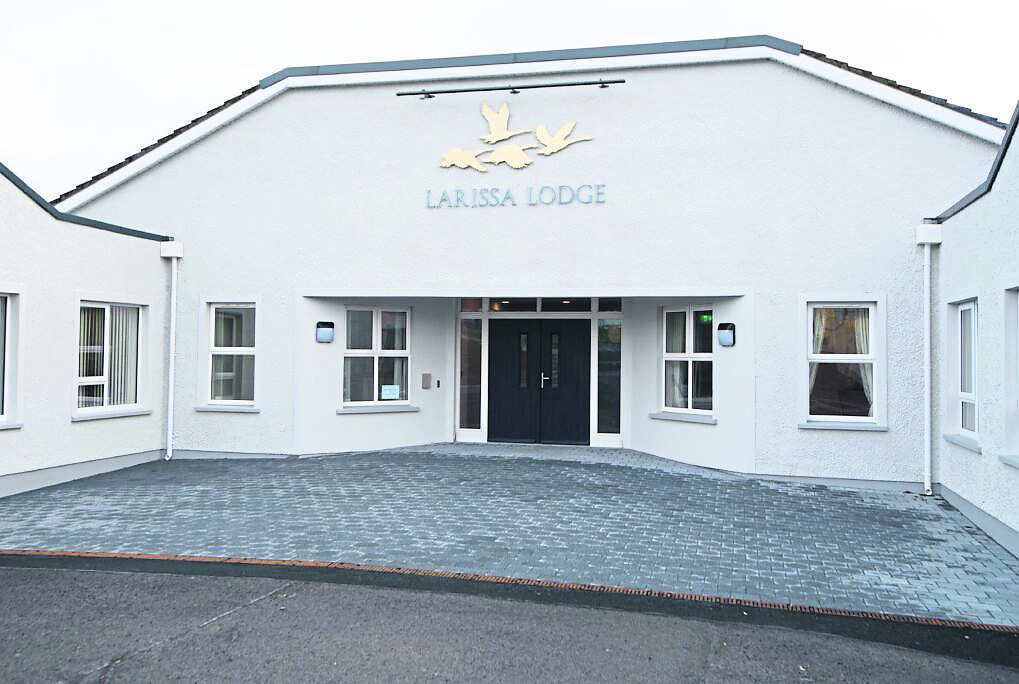by Louise Doyle
AN elderly woman died after sustaining a traumatic head injury following a fall in a nursing home in Letterkenny, an inquest into her death heard.
Josephine McGinty passed away in Letterkenny University Hospital (LUH) on September 7, 2021, a day after she fell in the ensuite bathroom of her bedroom at Larissa Lodge Nursing Home.
A coroner’s inquest into Ms McGinty’s death was held in Letterkenny Courthouse on Friday last.
A statement from Garda Matthew Lenihan was read to the inquest, detailing how on September 7, 2021, gardaí were on patrol when they received a report of a sudden death at LUH.
The inquest heard how Ms McGinty had taken an unidentified fall on September 6, 2021 in Larissa Lodge Nursing Home.
In her evidence to the inquest, Christine Gipp, Quality and Assurance Lead, Eliza Healthcare Group, said Ms McGinty had been found by the activities coordinator laying on the floor of her ensuite bathroom, having hit her head on the shower room chair.
She was bleeding from the left hand side of her forehead, but she was alert at the time. No other injuries were noted, and her vital signs were normal.
Ms Gipp told the inquest that Ms McGinty had vascular dementia. She had been living in Sprackburn Crescent before going to live in Larissa Lodge.
Coroner Dr Denis McCauley asked Ms Gipp the level of Ms McGinty’s confusion.
“It was recorded that she never used the call bell, but that is not unusual. She had an off-steady gait but was mobile with her zimmer frame. She fed herself and only needed a little assistance with personal care.”
INDEPENDENCE
Ms McGinty had previously had two aneurysms. She had had some falls prior to admission to the nursing home, the inquest was told.
Dr McCauley asked if Larissa Lodged would have been aware of the previous falls, and what actions were taken to alleviate such incidents.
Responding, Ms Gipp said Ms McGinty had been identified as a high falls risk on the day of her admission to Larissa Lodge Nursing Home.
“She had a sensory alarm to alert staff when she was on the move. A care plan was in place, and safety checks in her room were carried out.
“The alarm was activated when she moved from her chair or bed in her bedroom, making staff aware she was on the move.”
Dr McCauley asked if Ms McGinty had a one-to-one member of staff walking with her at all times.
Ms Gipp said that while she did not have a staff member walking with her at all times, there was extra provision in place with enhanced supervision and increased checks from hourly to half hourly in her bedroom.
Dr McCauley asked how common it was for a resident to be assigned a one-one-one, to which Ms Gipp responded that “it wouldn’t be that common”.
“The plan was that she may have needed more assistance walking, but to allow for a level of independence too,” said Ms Gipp.
On day she fell, Ms McGinty’s sensory mat wasn’t activated because she was not sitting on it as she was not sitting in the chair in her room before her fall: “She was observed going into her room, and it would have been ideal if she had sat down on her seat first, as the sensory mat would have been activated but she went straight to her ensuite toilet.”
Ms Gipp said a one-to-one for Ms McGinty may have been a consideration of her care plan on her return to Larissa Lodge.
Ms McGinty had one previous fall and one slip during her time in Larissa Lodge.
Escalation measures were due to be put in place following the fall.
“It’s a balance all the time. it has to be personalised to the individual. Records show she was assisted to the toilet, to meals and so on.”
During an internal review, it was found that Ms McGinty had hit her head on the shower chair.
A query arose over the placement of the shower chair, whether it should have been removed from the shower room after each use.
However, Dr McCauley said that this would not be possible due to infection control reasons.
Safety rails are present on all toilets in Larissa Lodge Nursing Home, the inquest was told.
“Staff would have been on the corridor and heard Ms McGinty straight away”, Ms Gipp pointed out.
POST MORTEM
Dr Katrina Dillion, Pathologist, LUH, who performed the post mortem examination of the body of Ms McGinty, outlined her injuries.
“She had blood staining on her hair, a bruise on the centre of her forehead, an abrasion on the bridge of her nose, and her left cheek.
“There was some bruising on her limbs and an abrasion on her right shin.
“An internal examination showed Ms McGinty had marked swelling of her brain. Histology showed death was due to a hemorrhage due to a fall. There was a traumatic bleed in her brain.”
Dr McCauley said Ms McGinty died as the result of a fall.
“The nursing home did recognise she was a fall risk. She was frail, but mobile. The nursing home was working to prevent falls without taking away a person’s autonomy.
“There is evidence here that there was action taken.
“Ms McGinty died as the result of a traumatic head injury as the result of a fall. It was an accident,” said Dr McCauley.
Dr McCauley and Sergeant Jim Collins passed on their condolences to Ms McGinty’s family.










